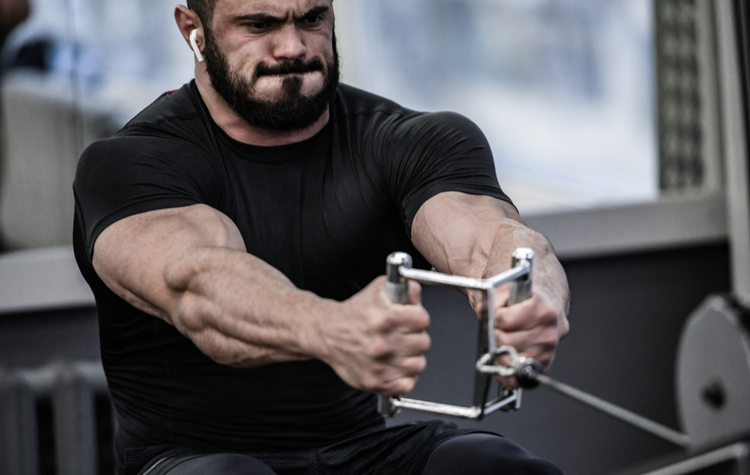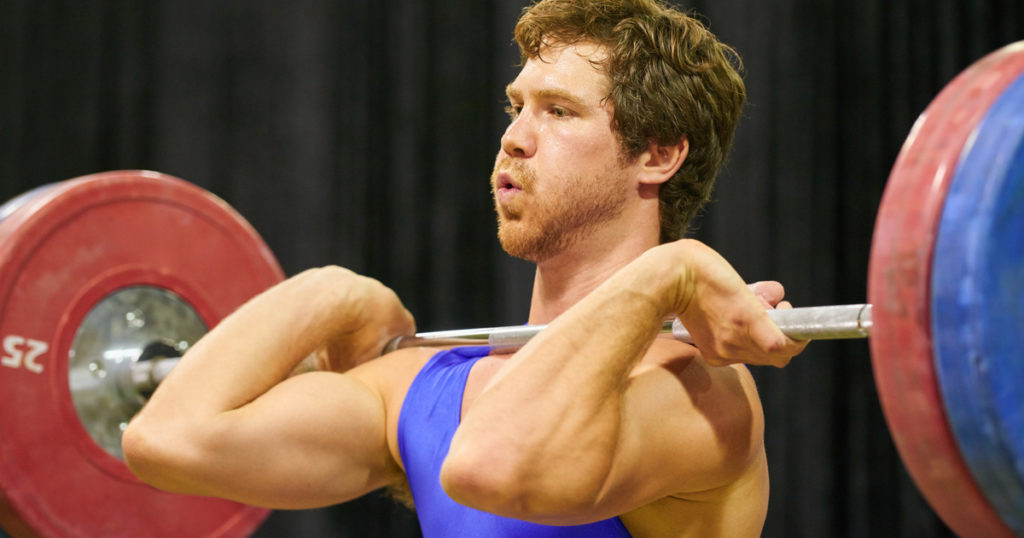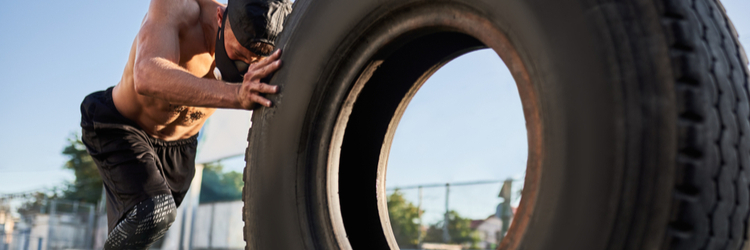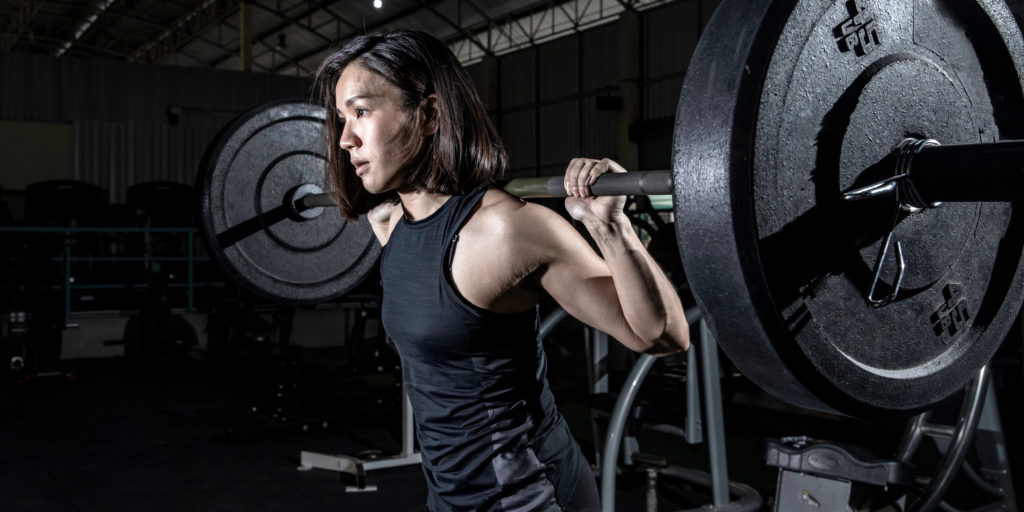I met Dr. Belisa a couple of years back. We spoke on the phone discussing an article I wrote back in 2009. In my article, I described how I teach strength athletes how to brace for heavy lifts. She had been using it as an example and wanted to include it in her new book that was recently released, Breathing For Warriors.
After our talk, I decided I wanted to learn more about how the breath influences health, physiology, mental state, and clarity, along with how well we perform. So I set out to learn directly from her. I’d already started testing how breath work could change my own response to fatigue and that of my lifters and athletes.
But I wanted to learn more techniques and ideas on how to improve breathing capacity and see how it truly influences recovery and output in powerlifting, Olympic weightlifting, and general barbell training.

Breathing Needs To Be Taught
With how often you hear strength athletes talk about breathing and bracing, you’d think they’d have a good sense of breathing mechanics with good control over primary breathing muscles. But through all of my time coaching, I’ve found that just because they’re aware of its importance doesn’t mean they understand the how.
In addition, adults confuse children on how to breathe. I saw it happen with my kids. Children naturally inhale horizontally into their belly and rib cage. Without thought, their midsections expand on the inhale and narrow on the exhale.
But then they start to copy adults when they tell them to take a deep breath. And what’s it look like? It’s a vertical breath where they breathe into and raise their upper chest and shoulders.
The kids go from using primary breathing muscles that create a full and complete horizontal breath to overusing accessory breathing muscles. The diaphragm becomes “locked up” from this improper use, and they start drawing in far less air each breath. The super exaggerated up-and-down breath their parents and teachers taught them does little for taking in a significant volume of air.
So, we need to learn where to breathe into, along with making sure that the muscles responsible for bringing air ito this location are strong enough to do so. If we can manage to do this, every breath will be better, and not only will our perception of fatigue change, but we’ll also increase stores of energy and our bodies will better curb fatigue through an improved capability of removing the waste products that are built up during exercise.

Bringing It Back
When we engage primary breathing muscles and correct patterns, the diaphragm flattens and creates pressure which causes the abdomen to expand out in all directions circumferentially. This horizontal breath expands not just the belly, but the sides with the rib cage and lower back as well.
When we exhale, those same areas should narrow. If we breathe this way, we have a better balance of gas exchange. Each breath we take is of better quality. We also improve posture and movement by relaxing overused muscles that should only be assisting with the breath.
We need to be conscious of all of it. But knowing it should happen doesn’t make it happen. We have to practice and train the muscles and patterns for it just as we would train anything else.
The first step is to feel the sensation of a good breath. Place your open hands gently on your belly and the sides of our body to create a tactile cue on where to breathe. Your thumbs should be at the edge of your bottom ribs and your fingers should fan out below this. Keeping your neck and shoulders relaxed, rock forward to inhale where your hands are resting. You can close your eyes to feel the air expand your belly and rib cage under your hands. As you exhale all of the air out, use your hands to help you narrow out your midsection. Make sure to really focus on narrowing and expelling all of the air out. Most of us are pretty bad at this.
Do this with your eyes closed a few times to really encourage this horizontal breath. This is just the very first step to learning how to breathe effectively and if you don’t do the other exercises Dr. Belisa teaches, you’ll miss the big picture so I highly recommend checking out her book or other resources.
Recovering During And In-Between
Speaking of recovery, there are two parts to address. The first — and most popular— is how we recover and adapt in-between training sessions. The second is how well we bounce back between sets or bouts of effort. Both are pretty drastically influenced by the quality and strength of our breath.
After we train, the condition of our breath helps the recovery and adaptation process. If we are breathing horizontally with good diaphragmatic function, then we are better able to detox waste products.
Breathing deeply and using techniques that help the mechanics also reduces physiological and psychological stress. And reducing the stress response will do more for recovery than most anything else. It influences the nervous system to hit a reset button of sorts.
Training the breathing muscles and controlling the breath as you rest between sets directly improves how well and how fast you recover and feel ready to repeat the same level of intensity.

When you rest between sets or efforts, don’t look at your phone or have any other distractions. Deliberately relax the body to breathe more easily. Try different methods like timing your inhale, exhale, and pauses between breaths over a number of different counts to find what works best for you. I like to inhale over a four-count, hold it for a beat, exhale over a four-count and hold it for two beats. A few horizontal breaths like this and I feel ready to go again.
Controlled diaphragmatic breathing in-between sets will not only help control the build up of waste products that cause fatigue in the moment, but also alter your mental state. Your sense of how much fatigue you feel will change.
The Breath For Performance
Underdeveloped breathing muscles don’t just keep us from doing more work, it keeps us from doing quality work. When we lift heavy weights and load our spines, we need to use the breath to create stiffness in our trunk to keep our spines from changing shape under load. A good breath creates internal pressure that braces our trunk to protect our spine and allow for better movement quality and mechanics.
We need to understand the role of the breath and how to use it properly to reinforce the muscles of the trunk.
One and Done
When we do one heavy rep, we are trying to hold our breath and do a Valsalva maneuver.
For the Valsalva maneuver, we are using breath to increase intra-abdominal and intrathoracic pressure. We’re pressurizing our entire midsection, holding the breath, and forcing the air against a closed glottis (a step most overlook).
To brace, we contract the abdominal wall, the sides of the body, the muscles in the lower back, and even the hips, and we pressurize this entire area internally by inhaling and holding a large volume of air. The breath itself helps with greater production of force and stability.
The best way to think of this co-contraction of the front, side, and back musculature is to pretend you’re about to get kicked really hard in the midsection. This gives you the feeling of tensing everything synergistically similarly to the way you should for a heavy lift.

But without the ability to breathe diaphragmatically and take the air horizontally into the torso, and the muscles responsible for this breath aren’t trained and strong, then you’ll never create a true feeling of intra-abdominal and intra-thoracic pressure. These dominant breathing muscles won’t be strong unless they are specifically trained.
A Longer Brace
If we’re doing longer sets or continuously loaded conditioning movements, then we obviously can’t and shouldn’t’ hold our breath the whole time. However, we still need to keep our trunk rigid to protect ourselves and transfer power through our bodies. To buffer against fatigue we need to make sure that we are still getting adequate oxygen. Breathing sufficiently into our mid-section while we keep it tense and stiff is not an easy thing to accomplish. It’s a skill and it needs to be practiced.
For example, if we’re doing high rep sets of a barbell squat, we will have to take a breath at least once every two reps, and for some maybe every rep. You would take another breath at the top of each rep and hold it, using the Valsalva maneuver as you descend and rise up from the squat or forcing some (not all) air out as you push through the hardest part of the ascent.
Where many get lost in this process is in trying to take a big breath of air in-between reps. They get desperate for the support of the air to pressurize the torso and default to taking a big vertical breath where they try to suck air into their chest, shoulders, and neck. Even if they took a diaphragmatic breath for the first rep, they revert back to the idea of what a big breath looks like for the remainder of the set. It may make them feel like they did something productive, but in truth, the quality of the inhale and the gas exchange was pretty poor.
A better strategy would be to keep tensing at the top, keeping the 360-degree brace against the belt and blow out some air keeping the brace, and thinking about blowing it out from a tight cylinder. Then take an easy breath, sucking into the same tight area. Even if it feels like it’s not as much air, it will be a better quality breath that will help combat the actual feeling of fatigue as you get through the long set.
Breathing in a rhythmic pattern while keeping trunk rigidity can help for loaded conditioning methods like kettlebell swings or farmer’s walks. There are a number of ways this can be done, but a good place to start is by timing your breathing with your effort. Using swings as an example, you could inhale as you guide the kettlebell down and exhale out, possibly hissing or making a guttural sound to increase pressure and tension in the abdominal wall as you exert force into the bell making it swing forward.
You can also test how quickly this breath needs to be cycled. You could breathe in for two swings and breath out on the concentric effort (pushing the hips forward) of the third swing. You could start your sets out inhaling and exhaling only through the nose and switch to nose and mouth as your effort increases and breathing labors a bit more.
A similar method could be used for farmer’s walks and other loaded carrying variations like this. You may breathe in for two steps and exhale as your foot strikes on the third. It’s all an experiment and being conscious about it is the first step. Fixing yourself on a rhythm will help you keep better tension in the musculature as the air goes in and out.
Don’t Miss Out
It’s such a simple idea. Breathe deeper, better, and be aware of where you take your breath and how you use it and you’ll be able to fight fatigue and lift heavier. You’ll have levels of energy you didn’t before. You’ll be able to recoup from training both during the workout and after.
Yet, the skill of it isn’t so simple if you don’t practice. You need to take the training seriously. The primary breathing muscles need to be strengthened and the patterns need to be practiced. Take the time to really learn it.
Editor’s note: This article is an op-ed. The views expressed herein and in the video are the author’s and don’t necessarily reflect the views of BarBend. Claims, assertions, opinions, and quotes have been sourced exclusively by the author.
Feature image by mavo / shutterstock
